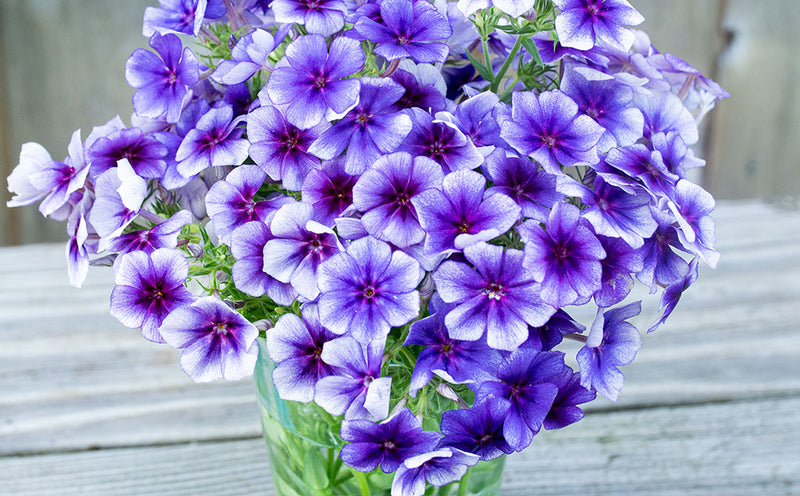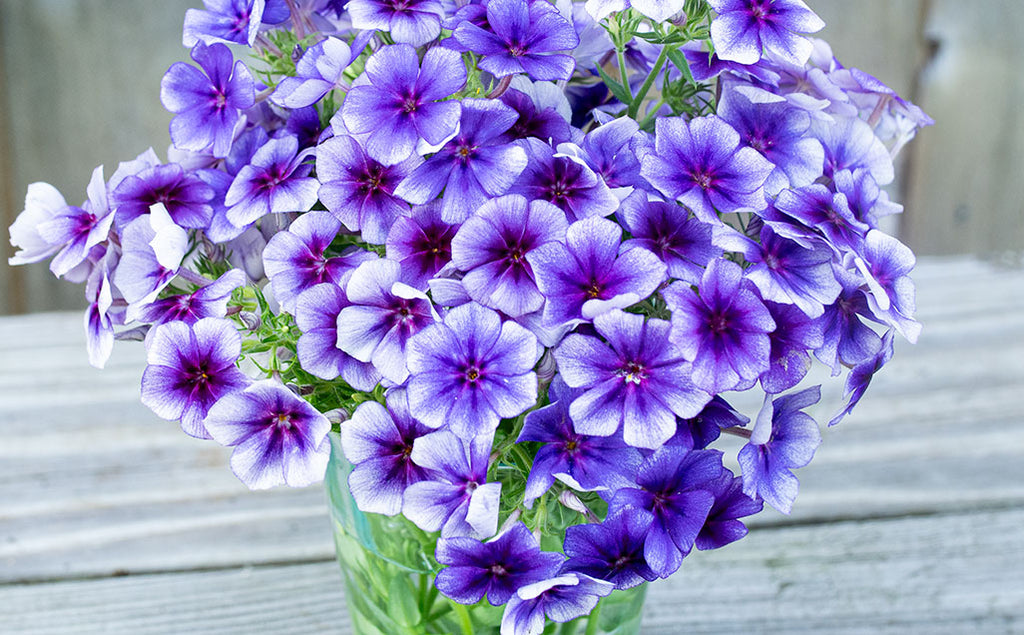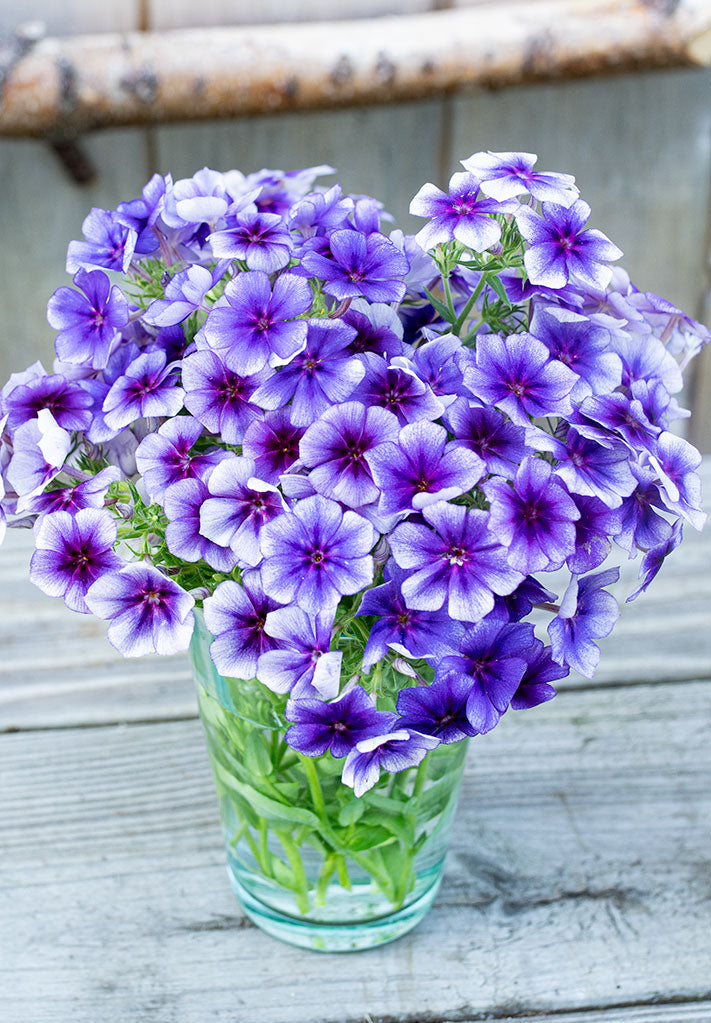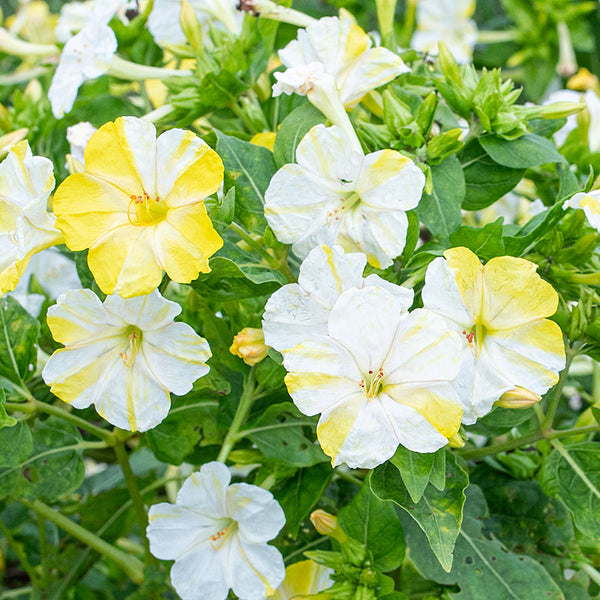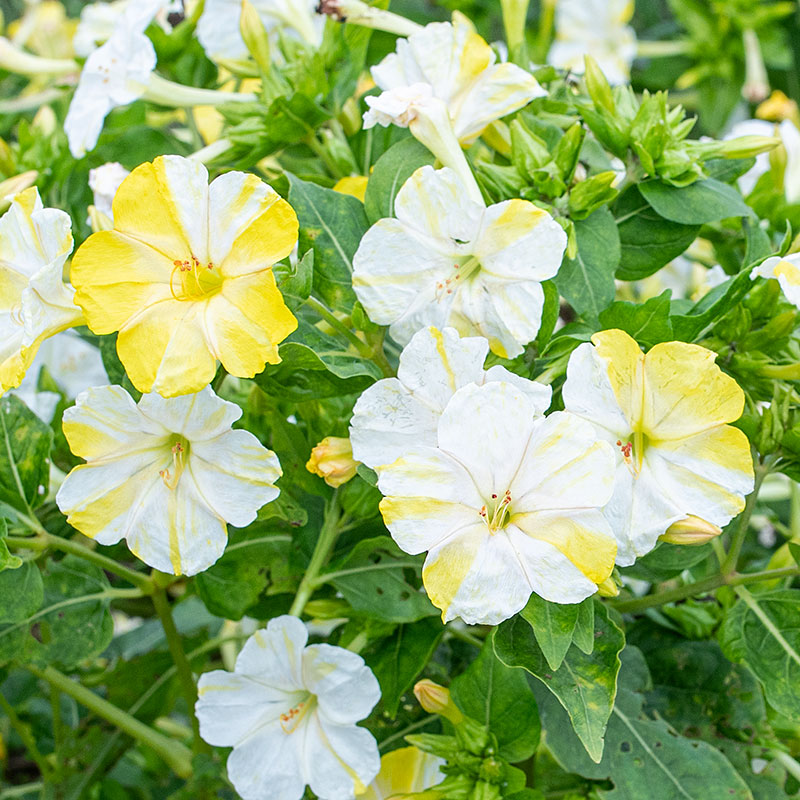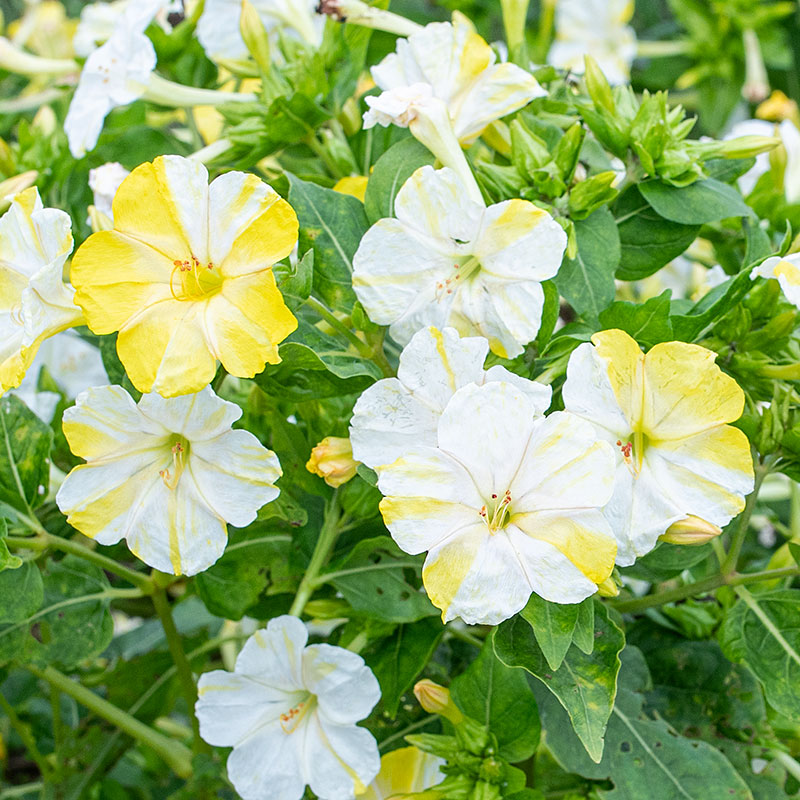SOWING INSTRUCTIONS
Starting Indoors:
Start in pots 6-8 weeks before last spring frost. Keep at 70°F.
Starting Outdoors:
Recommended. Direct sow 1 week after last spring frost.
WHEN TO SET OUTSIDE
In springtime, after all danger of frost has passed.
PLACEMENT & CULTIVATION
Marvel of Peru they were called by early herbalists, who raved about this "Marvel of the World" for its various bright flower colors intermingled on the same plant. They grow rapidly from their football-shaped dark seeds and soon branch into a small shrub studded with masses of sweetly scented flowers combining the perfumes of floral rose and citrus that wait until dusk to open. Heat, humidity, and drought tolerant once fully established, they also attract hummingbirds. Once fall arrives or under cloudy skies, they often stay open during the daylight hours. If you want to overwinter the tuberous roots, dig up in autumn after frost and store them in a reasonably dry medium in a cool, dry, frost-free location, such as a garage or basement. Caution: mildly toxic roots and seeds.
Watering Details:
Drought tolerant where perennial due to large tuberose roots. 1" of water per week elsewhere, as regular watering will promote more flowering.
Fertilizer:
Mix in a time release organic granular fertilizer; alternatively, feed monthly with a water soluble fertilizer.
Diseases & Pests:
No serious diseases or pests; if aphids appear on young plants, hose down or mist daily until the insects disappear. Japanese beetles can be picked off early morning and drowned in soapy water.
